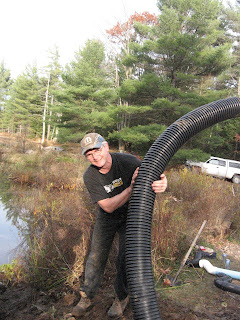This wierd mushroom found by Marcy has finally been identified.
 |
| Phallus impudicus, commonly known as the common stinkhorn, |
It's a
Phallus impudicus, commonly known as the common stinkhorn, is a widespread fungus recognizable for its foul odor and its phallic shape when mature. It is a common mushroom in Europe and western North America, where it occurs in habitats rich in wood debris such as forests and mulched gardens. It appears from summer to late autumn. The fruiting structure is tall and white with a slimy, dark olive colored conical head.
And this ball of "eggs" seen under water at the beaver dam is a bryozoan (
Ectoprocta) colony. Freshwater bryozoans are tiny colonial animals that can form jelly-like masses, which are often found attached to docks. Bryozoan colonies can be as much as a foot (30 cm) in diameter.
 |
| a bryozoan (Ectoprocta) colony |
They are tiny colonial aquatic creatures that effectively filter particles from the water. The large gelatinous species is native to North America and often grows on docks and other submerged wood. Bryozoa have only recently been getting major scientific study but some freshwater varieties are thought to be useful indicators of water quality.
It will not exist in water that is contaminated.









